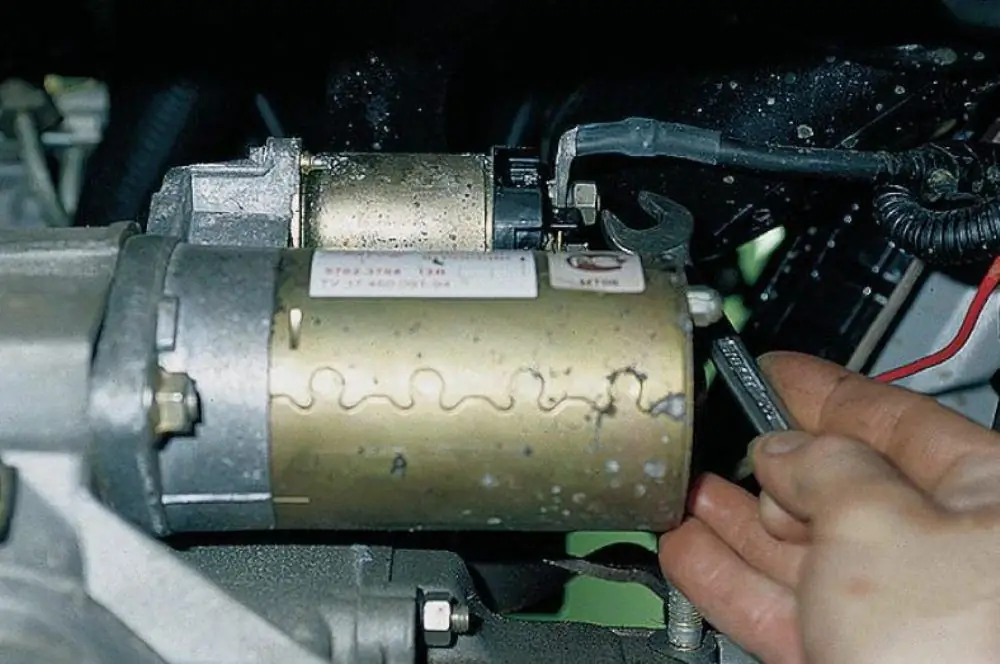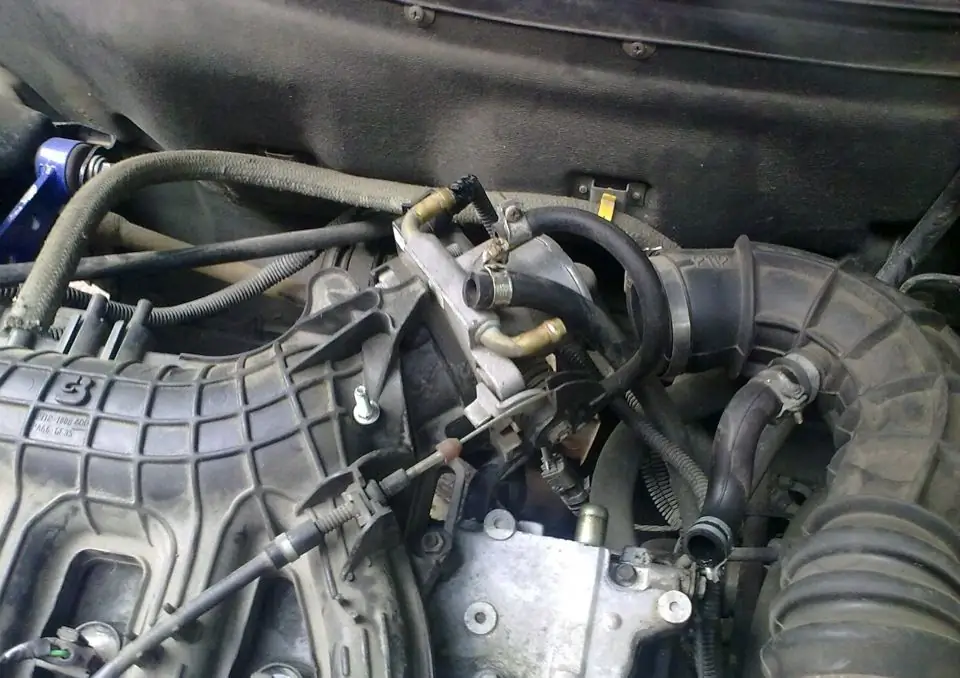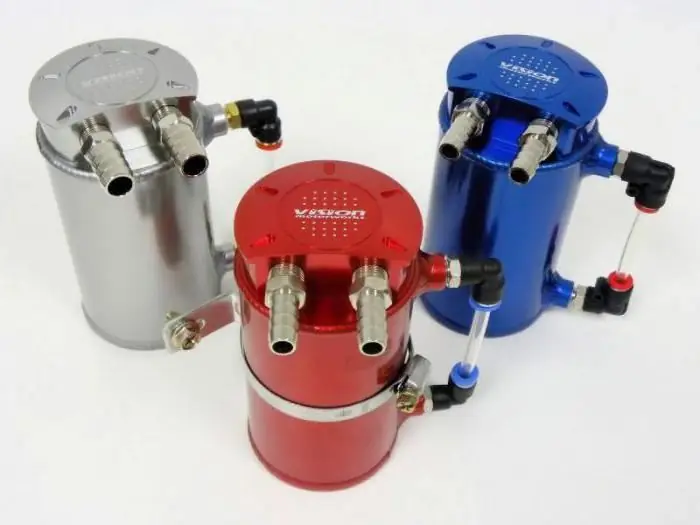2025 Author: Erin Ralphs | [email protected]. Last modified: 2025-01-22 21:14:16
VVTI is a variable valve timing system developed by Toyota. If this abbreviation is translated from English, then this system is responsible for the intelligent phase shift. Now the second generation of mechanisms is installed on modern Japanese engines. And for the first time, VVTI began to be installed on cars since 1996. The system consists of a coupling and a special VVTI valve. The latter acts as a sensor.
Toyota VVTI valve device
The element consists of a body. The control solenoid is located in the outer part. He is responsible for the movement of the valve. The device also has o-rings and a connector for connecting the sensor.
General principle of the system
The main control device in this variable valve timing system is the VVTI clutch. By default, the engine designers designed the valve opening phases to get good traction at low engine speeds. As you growRPM also increases the oil pressure, due to which the VVTI valve opens. The Toyota Camry and its 2.4 liter engine work on the same principle.

After this valve opens, the camshaft will rotate to a certain position relative to the pulley. The cams on the shaft are specially shaped and the intake valves will open slightly earlier as the element rotates. Accordingly, close later. This should have the best effect on the power and torque of the engine at high speeds.
Detailed job description
The main control mechanism of the system (and this is the clutch) is mounted on the engine camshaft pulley. Its body is connected to a sprocket or toothed pulley. The rotor is connected directly to the camshaft. Oil from the lubrication system is supplied from one or both sides to each petal of the rotor on the clutch, thereby causing the camshaft to turn. When the engine is not running, the system automatically sets the maximum delay angles. They correspond to the latest opening and closing of the intake valves. When the engine starts, the oil pressure is not strong enough to open the VVTI valve. To avoid any shocks in the system, the rotor is connected to the clutch housing with a pin, which, when the lubrication pressure increases, will be squeezed out by the oil itself.

The system is controlled by a special valve. On a signal from the ECU, an electric magnet using a plunger will startmove the spool, thereby passing oil in one direction or the other. When the motor is stopped, this spool is moved by a spring to set the maximum delay angle. In order to rotate the camshaft at a certain angle, high pressure oil is supplied through the spool to one side of the petals on the rotor. At the same time, a special cavity opens to drain. It is located on the other side of the petal. After the ECU understands that the camshaft is rotated to the desired angle, the pulley channels overlap and it will continue to be held in this position.
Typical symptoms of VVTI system problems
So, the system must change the phases of the gas distribution mechanism. If there are any problems with it, then the car will not be able to function normally in one or more operating modes. There are several symptoms that indicate malfunctions.

So, the car does not keep idle at the same level. This indicates that the VVTI valve is not working as it should. Also, the "braking" of the engine will tell about various problems in the system. Often, with problems with this phase change mechanism, it is not possible for the motor to operate at low speeds. Another problem with the valve can be indicated by error P1349. If the idle speed is high on a warm power unit, the car does not drive at all.
Possible causes of valve failure
The main causes of valve failures are not so many. Two can be distinguishedwhich are especially common. So, the VVTI valve may fail due to the fact that there are breaks in the coil. In this case, the element will not be able to correctly respond to voltage transfers. Troubleshooting is easily done by checking the sensor coil resistance measurement.

The second reason why the VVTI (Toyota) valve does not work properly or does not work at all is sticking in the stem. The cause of such jamming may be the banal dirt that has accumulated in the channel over time. It is also possible that the sealing gum inside the valve is deformed. In this case, restoring the mechanism is very simple - just clean the dirt from there. This can be done by soaking or soaking the element in special liquids.
How to clean the valve?
Many malfunctions can be cured by cleaning the sensor. First you need to find the VVTI valve. Where this element is located can be seen in the photo below. He is circled in the picture.

To dismantle the sensor, remove the plastic cover of the power unit. Then remove the metal cover that fixes the generator. The desired valve will be visible under the cover. It is necessary to disconnect the electrical connector from it and unscrew the bolt. It is very difficult to make a mistake here - this is the only bolt here. The VVTI 1NZ valve can then be removed. But for this you do not need to pull the connector. It is very close to the sensor. It also has a rubber o-ring installed.
Cleaning can bebe carried out with carburetor cleaners. To completely clean the system, remove the filter. This element is located under the valve - it is a plug in which there is a hole for the hexagon. The filter also needs to be cleaned with this liquid. After all the operations, it remains only to assemble everything in the reverse order, and then install the alternator belt, without resting against the valve itself.
How to check the VVTI valve?
Checking if the valve is working is very simple. To do this, a voltage of 12 V is applied to the sensor contacts. It must be remembered that it is impossible to keep the element energized for a long time, since it cannot work in such modes for so long. When voltage is applied, the rod will retract inward. And when the circuit breaks, he will come back.

If the stem moves easily, then the valve is fully functional. It only needs to be washed, lubricated and can be operated. If it does not work as it should, then repair or replacement of the VVTI valve will help.
Valve self-repair
First, the alternator control bar is dismantled. Then remove the fasteners of the hood latch. This will give access to the alternator axle bolt. Next, unscrew the bolt that holds the valve itself, and remove it. Then remove the filter. If the last element and the valve are dirty, then these parts are cleaned. Repair is a check and lubrication. You can also replace the sealing ring. More serious repairs are not possible. If a part doesn't work, it's easier and cheaper to replace it with anew.
Self-replacement VVTI valve
Often cleaning and lubrication does not provide the desired result, and then the question arises of a complete replacement of the part. In addition, after the replacement, many car owners claim that the car began to work much better and fuel consumption decreased.

To begin with, remove the generator control bar. Then remove the fasteners of the hood lock and get access to the generator bolt. Open the bolt that holds the desired valve. The old element can be pulled out and thrown away, and a new one is put in place of the old one. Then the bolt is tightened, and the car can be operated.
Conclusion
Modern cars are both good and bad. They are bad because not every operation related to repair and maintenance can be performed independently. But you can replace this valve with your own hands, and this is a big plus for the Japanese manufacturer.
Recommended:
Where is the VAZ-2112 starter relay located? Location, purpose, replacement and device

The starter relay on the VAZ-2112 performs an important function on any car, regardless of model. Failure of this device leads to the fact that the car will not start. Drivers who are engaged in self-repair of the vehicle need to know where this unit is located and how to fix it if any malfunction occurs
Why is the Check Engine light on? Why does the check engine light come on?

In the age of modern technology, the technical characteristics of a car provide for the presence of a large number of electronics. Cars are literally stuffed with it. Some motorists do not even understand why it is needed or why this or that light is on. In our article we will talk about a small red light bulb called Check Engine. What is it and why does the "Check" light up, let's take a closer look
Throttle valve on the "Prior": where is it located, purpose, possible problems and repairs

It often happens that the car engine runs intermittently, despite the fact that the on-board computer does not give errors. The fuel supply pressure is normal, the sensors are intact, and the idle speed jumps from 550 to 1100. If a similar problem occurred on the Prior, then the cause may be hiding in a throttle valve malfunction
Gasoline pump: where is it located and how does it work, description and purpose of the device

The article details the purpose of the fuel pump. The principle of its operation on injection and carburetor engines is considered. Attention is focused on the location of the fuel pump in both cases. Causes of fuel pump failure are given
Where is the PCV valve located? Characteristics and principle of operation

PCV - forced crankcase ventilation system. The functioning of the power unit of the car largely depends on its condition. The main task of this system is the removal of crankcase gases from the engine. They are available in all power units, regardless of their novelty and service life. The only difference between them is the composition and quantity

